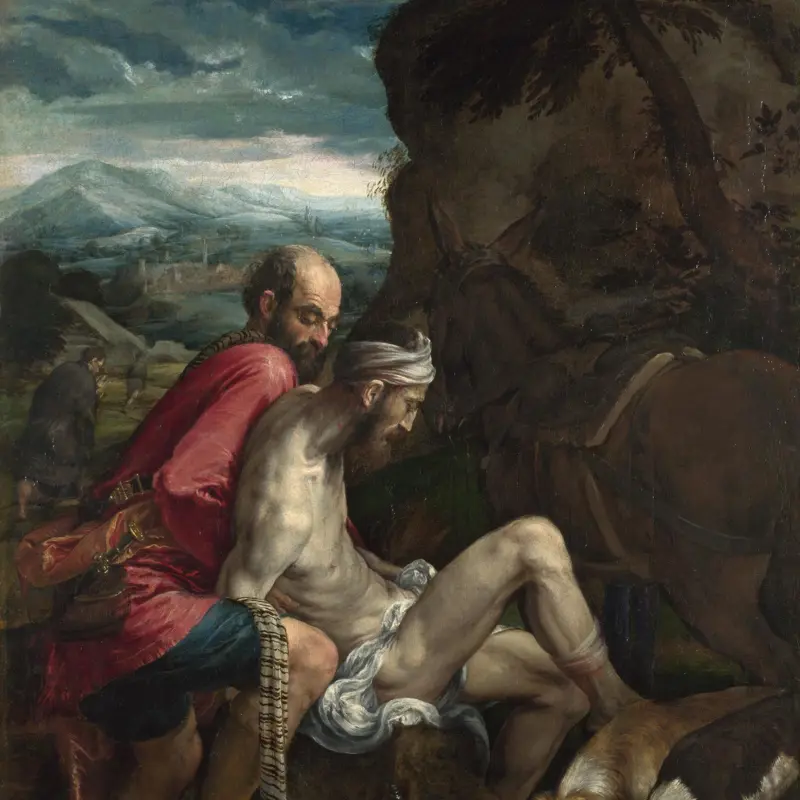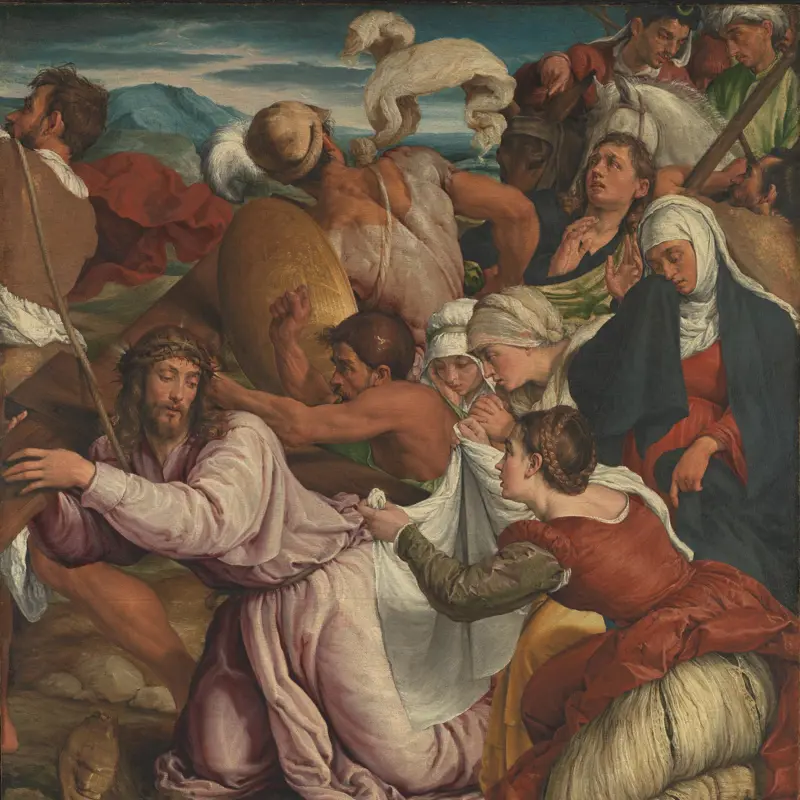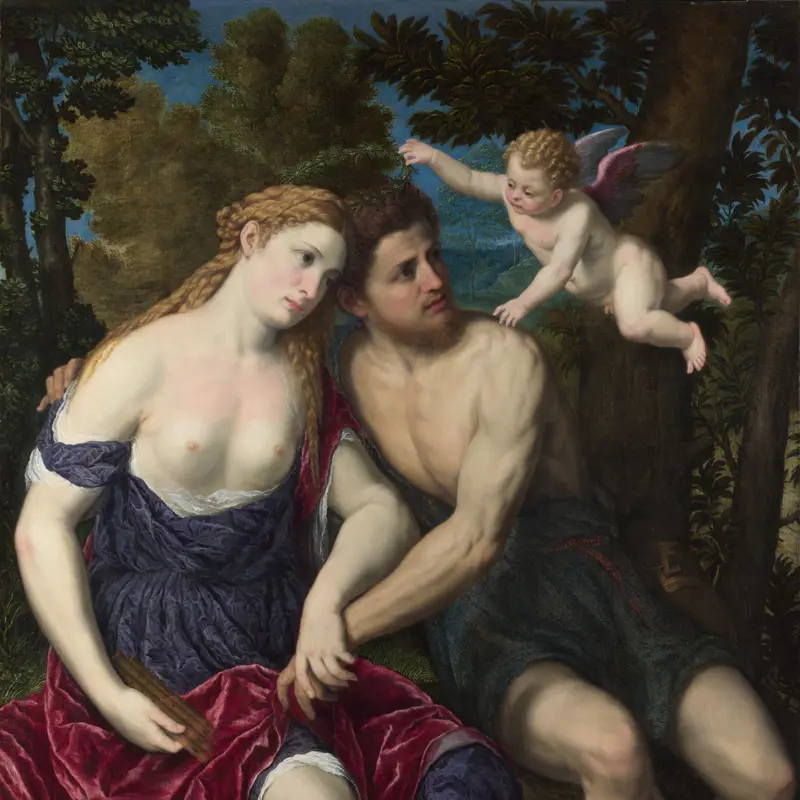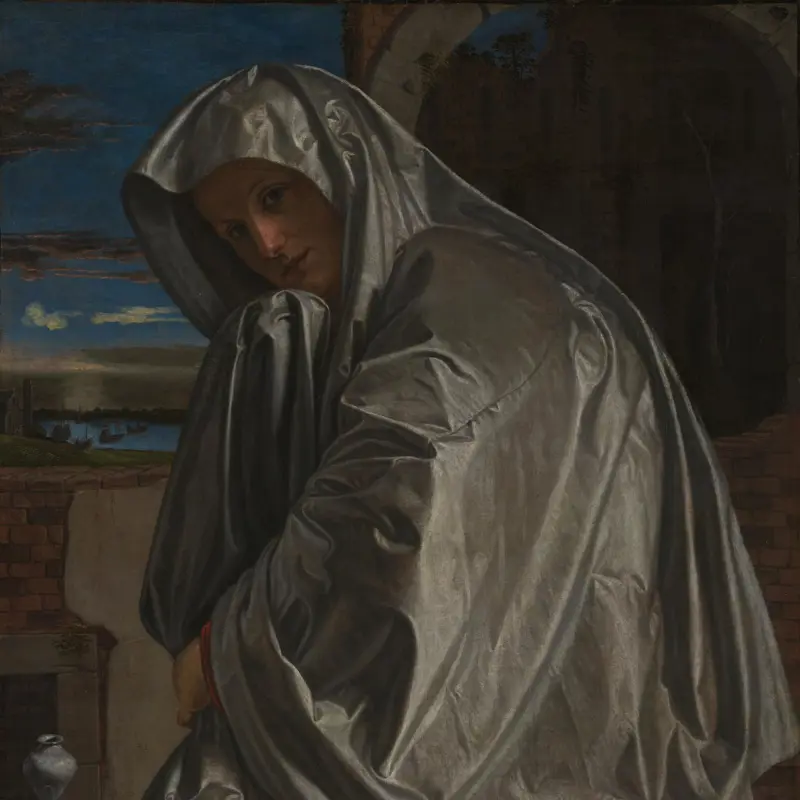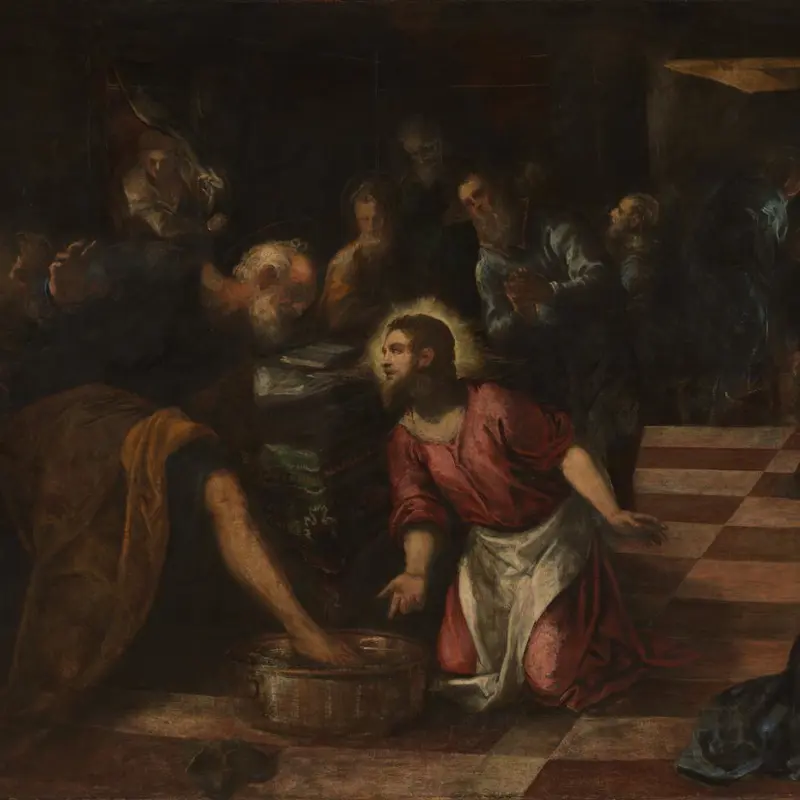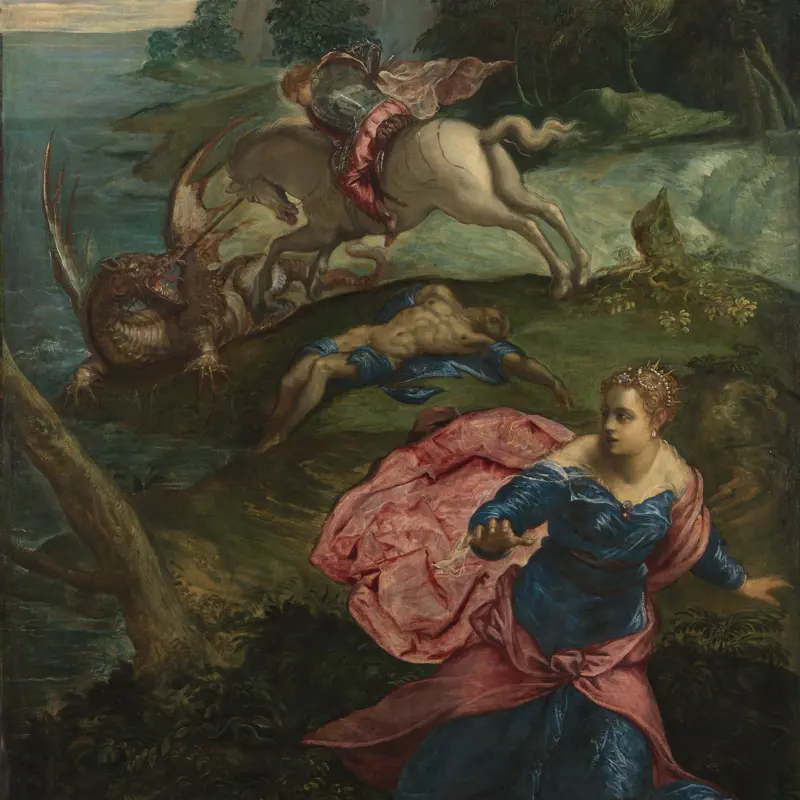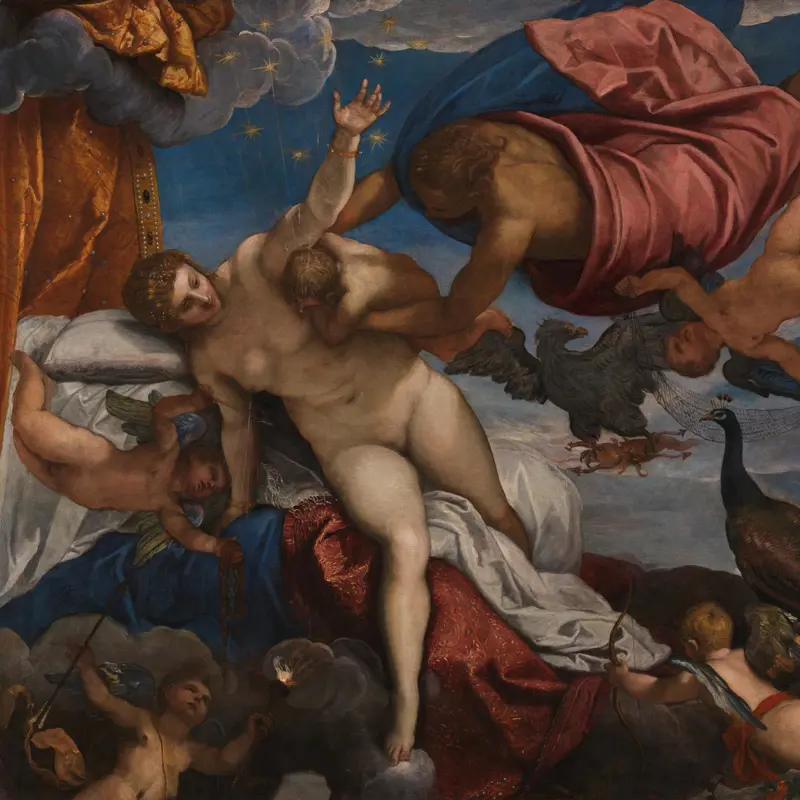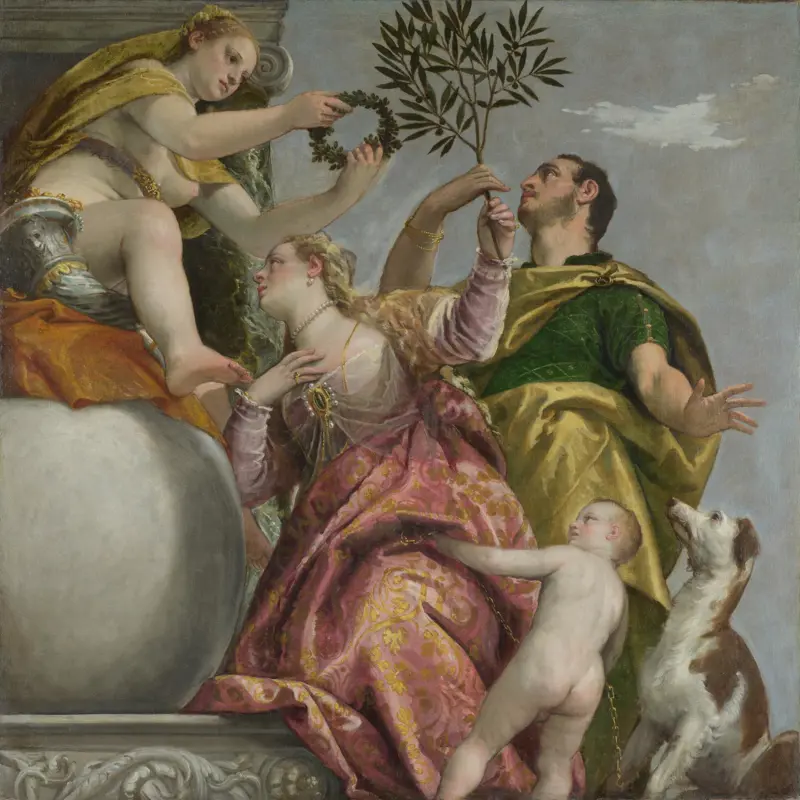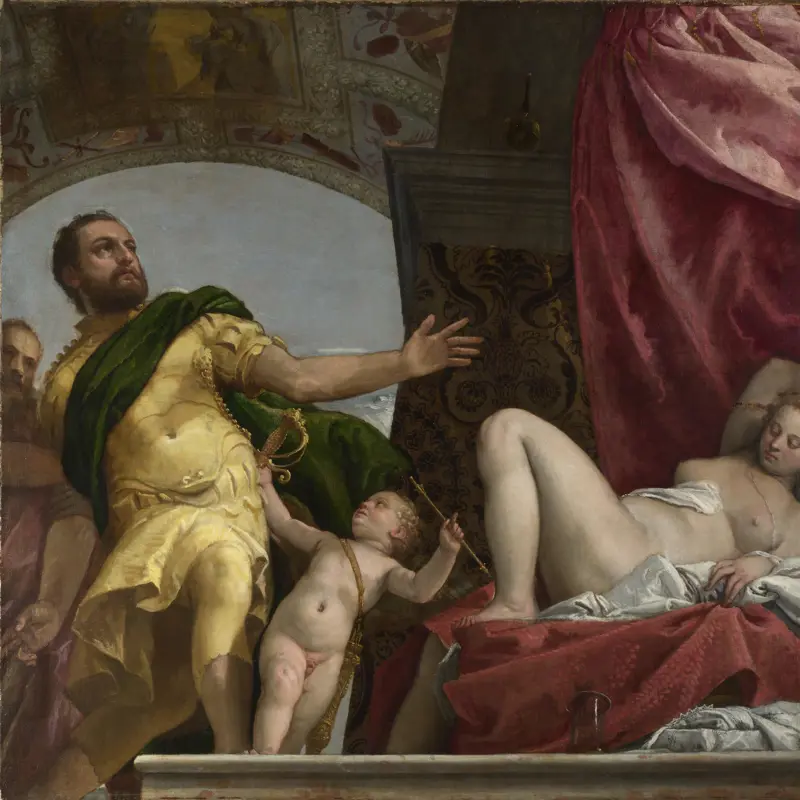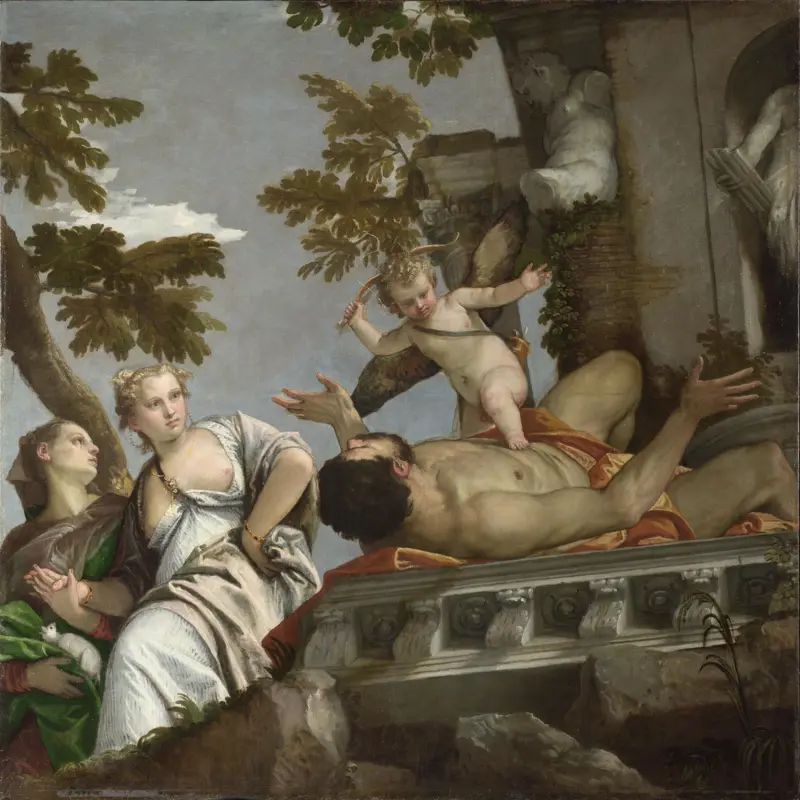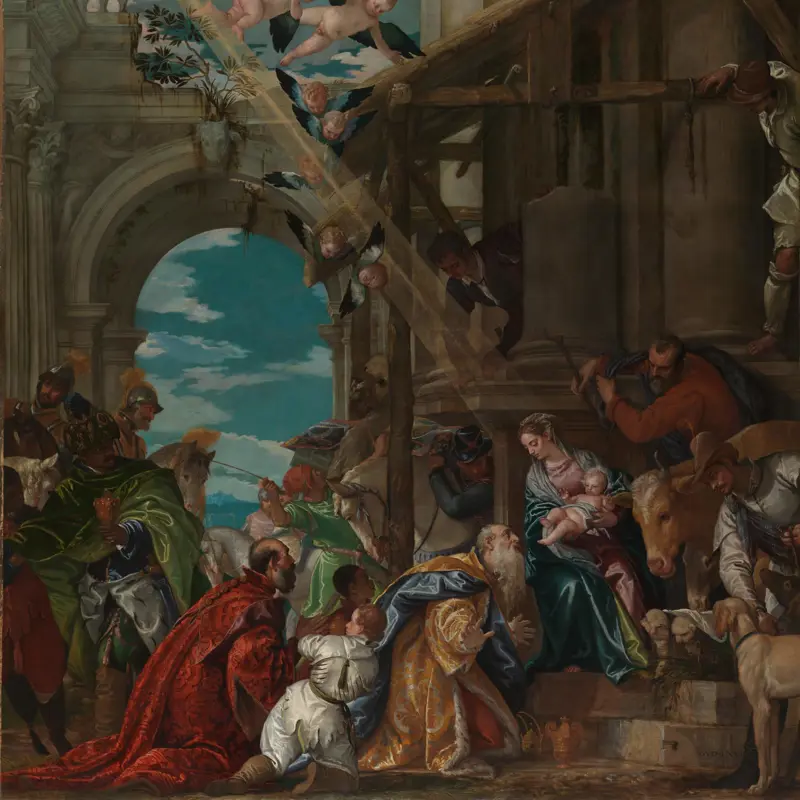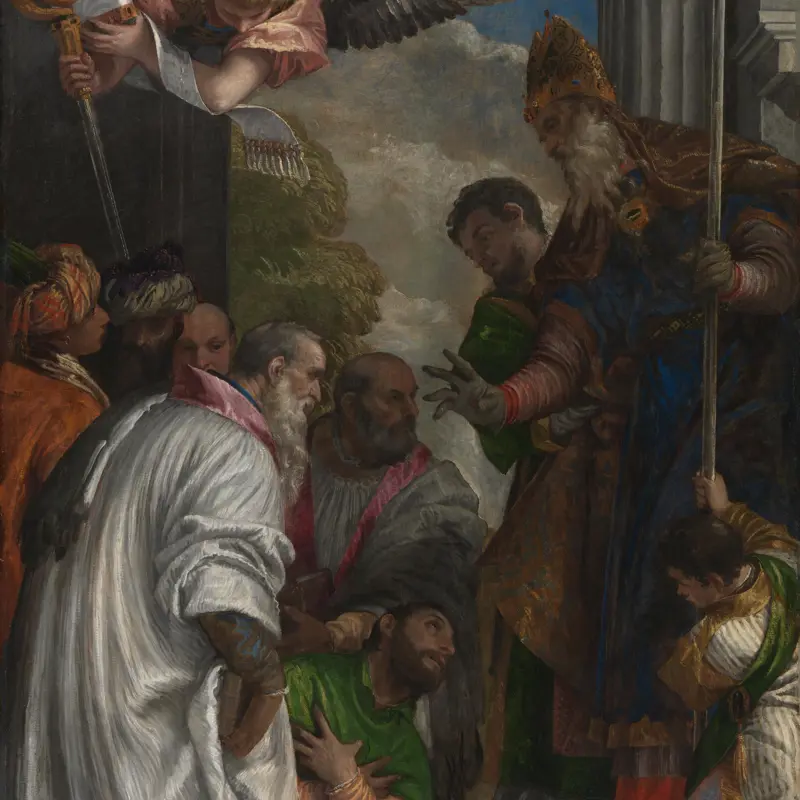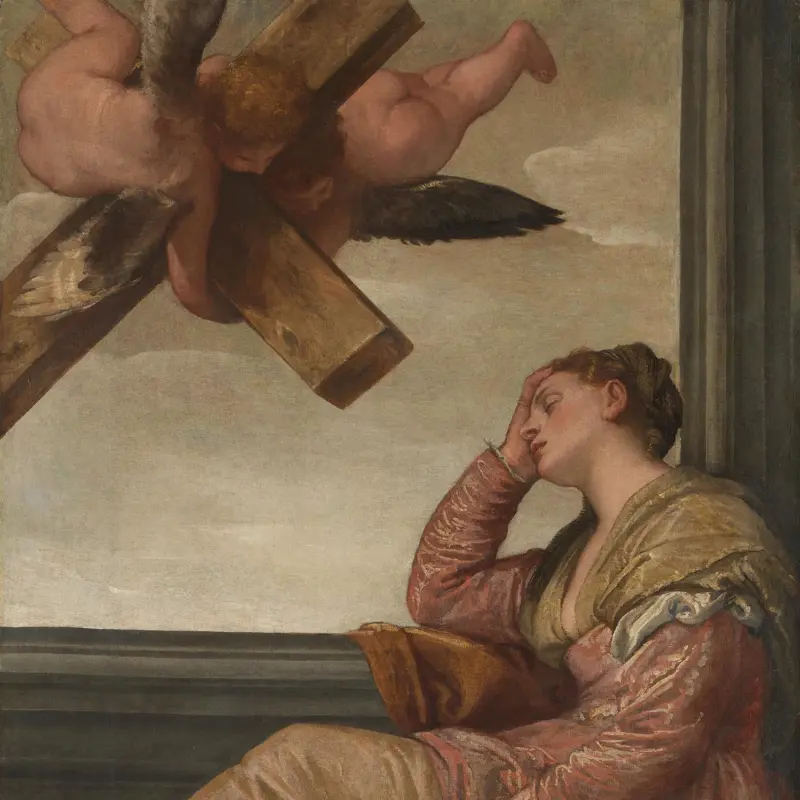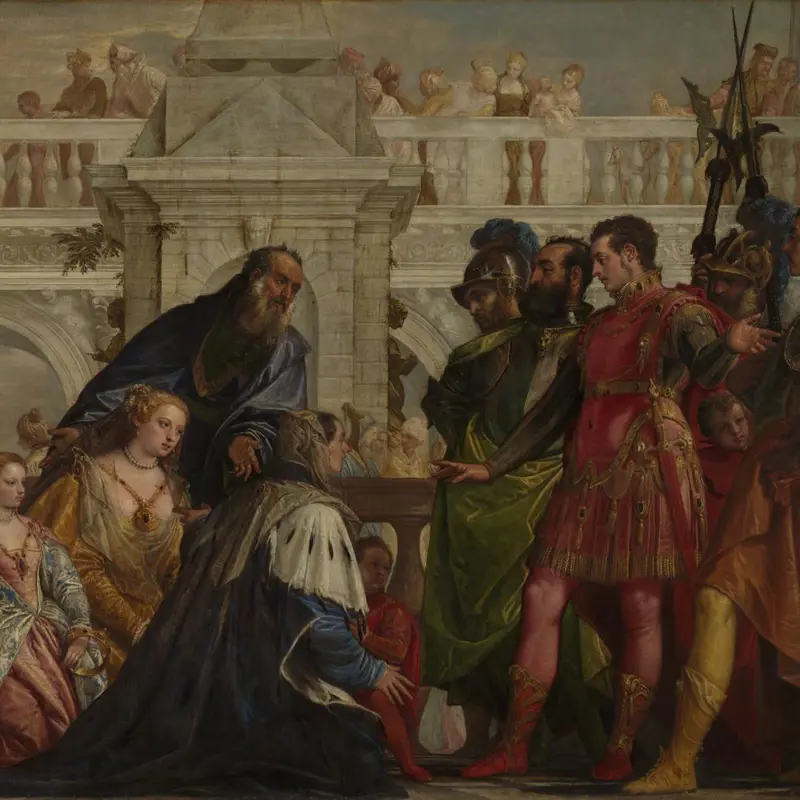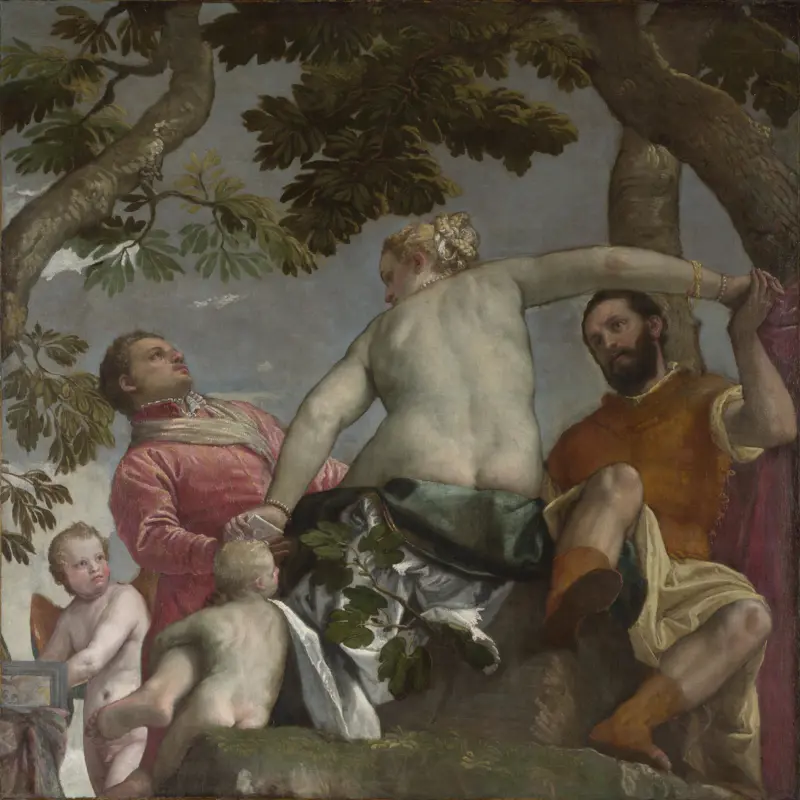By the 16th century Venice was the most powerful republic in Europe, at the centre of a cosmopolitan crossroads stretching across sea and land. Its thriving trade in luxury materials and wide range of patronage encouraged both artistic opportunity and fierce competition.
Titian was the most influential Venetian artist of his time. During the second half of the century Jacopo Tintoretto and Paolo Veronese became his most significant rivals. These three artists dominated Venetian painting. They developed new ways of applying oil paint to canvas using dynamic brushwork and translucent coloured glazes.
Veronese’s religious and mythological works shimmer with splendour and ceremony. Dressed in fine costumes, his figures gesture elegantly against theatrical backdrops. With rapid brushstrokes and dizzying compositions, Tintoretto defied the laws of gravity in his art. Bodies twist energetically in mid-air. Streaks of light and colour flash across the canvas.
Artists of the Venetian mainland (terraferma) responded to these developments, combining them with local traditions. Girolamo Savoldo found success among Venetian patrons with his depictions of life-size saints in twilight settings. Jacopo Bassano ran a large family workshop which became renowned for paintings of biblical themes set in pastoral landscapes.


